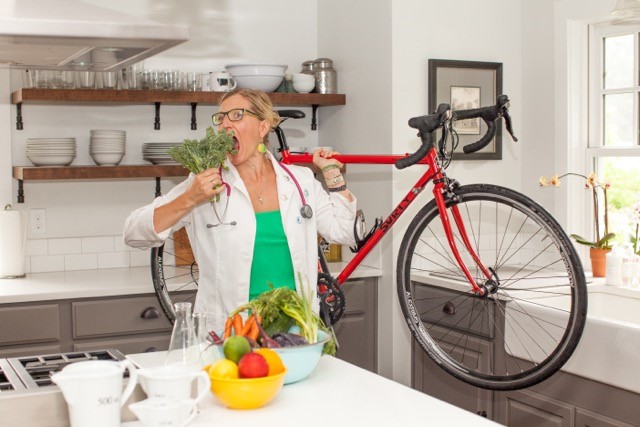There is a lot of talk these days about the microbiome, gut-brain axis, benefits of bacteria, and fermented foods. If you haven’t heard of any or all of those things or do not have a kombucha and sauerkraut habit just yet, don’t worry.
What is this microbiome thing? The human biome has a few different parts, and the microbiome refers to the trillions of bacteria we host at any given moment. Fun fact: The human body has about 30 trillion cells. The human microbiome contains about 100 trillion cells. Those are the invisible critters on your skin, in your mucosal membranes (like vaginal walls and nasal cavities), and inside your gastrointestinal tract. It takes more than a little hand sanitizer to put a dent in that population.
What do all those bacteria do?
The short answer is seemingly everything. Studies show that these single-celled wonders are responsible for tasks such as extraction of vitamins and nutrients, UV protection, hormone production, blood sugar regulation, cholesterol regulation, cancer protection, neurochemical production (they make about 95% of the body’s serotonin), and more.
You might be thinking, “I like serotonin and reduced skin cancer risk, so I should take lots of probiotics.” Not so fast there, eager ones. Like with most nutrients and materials that make the human body function well, these essential parts of our larger biome are best consumed in food sources. For example, it’s better to eat wild caught salmon than take fish oil pills. The same is true for our probiotic strains.
Historically, as the theories go, we have consumed these bacteria in the form of soil, raw meat, and funky chopping block colonies. And then we have consumed varied diets rich in fruits, vegetables, and the kinds of fibers that are the food of those bacteria. This is what allows the body to create a diverse, robust, and — this part is really important — unique microbiome.

Every microbiome is unique to its host.
We tend to grow a pretty common set of what we refer to as “commensal bacteria,” but each of us has a varying number and variety that represents our body’s current diet, needs, infections, age, etc.
This is why not everyone needs to take a probiotic. In fact, some studies are suggesting we ought to be a little cautious about how many more billions of those buggers we should swallow in pill form.
When we create an imbalance of bacteria in our GI tracts, this is called “dysbiosis” and can lead to other issues such as pathogenic overgrowth of otherwise friendly bacteria, candida and yeast overgrowth, or elevated inflammation of the GI tissues.
The current consensus (it’s of significance that we use the word “current” because new studies are teaching us new things each day) is that probiotic consumption during the use of antibiotics can help mitigate the overgrowth of yeast or antibiotic-use associated diarrhea. But while these bacteria do good things, we don’t all need to consume large amounts of them.
Studies also show that people who eat a diet rich in fruits and vegetables, fish, and nuts and seeds tend to have a better-balanced microbiome that can recolonize itself after the use of antibiotics or an infection (like a stomach flu that cleans all the pipes for a few days).
So how do you decide whether or not you need probiotics?
Well, first ask yourself if your diet has natural sources of bacteria. Do you get your vegetables from your local farmer’s market or garden? Do you eat lots of them? Are you a regular consumer of fish? Do you eat fermented foods from time to time? If yes and your gut feels happy and healthy and you have a daily bowel movement to be proud of, you’re probably just fine.
Then ask yourself if you have lifestyle factors that diminish a healthy microbiome: frequent antibiotic use, poor diet or even Standard American Diet, frequent alcohol consumption, high sugar consumption, and/or irregular bowels. If so, lifestyle change is the answer, but grabbing a varied probiotic off the shelf to take for a few weeks might be a good start.
If you still aren’t sure, seek the guidance of a professional who can help you assess those needs safely. In the meantime, eat your vegetables!
Originally published as “Managing a Microbiome” in the May-June 2021 issue.

Amy Midstokke is a nutritionist and author living in North Idaho. She’s been hard at work on a new book and hasn’t written anything for Out There in a while. We miss her.













